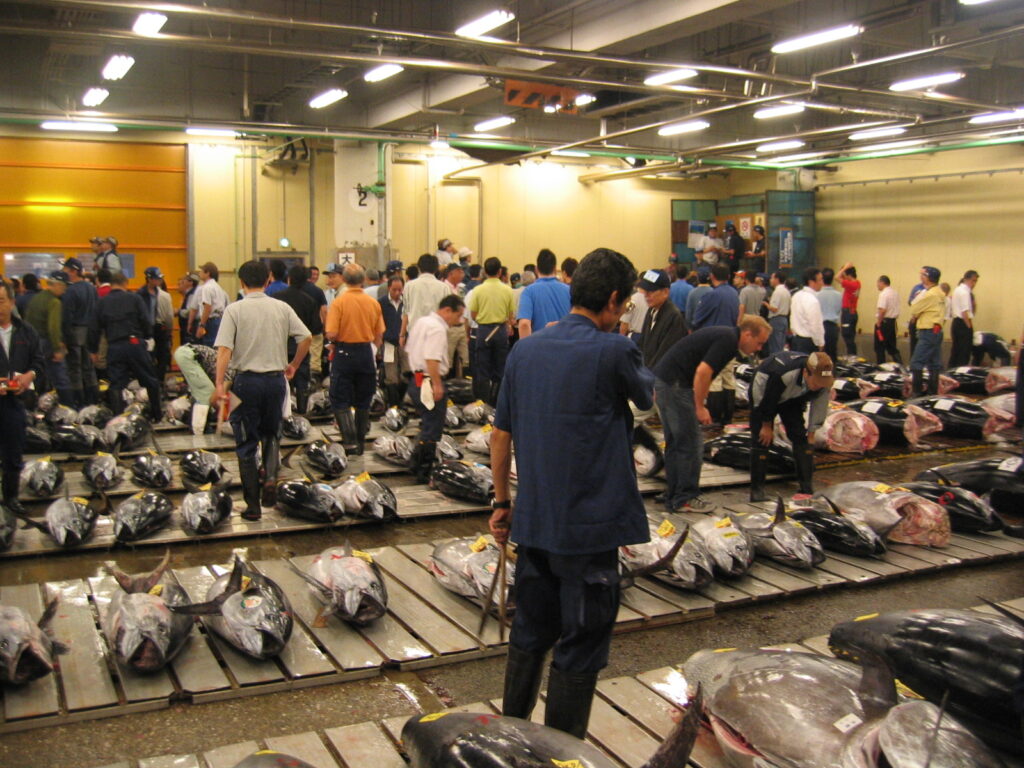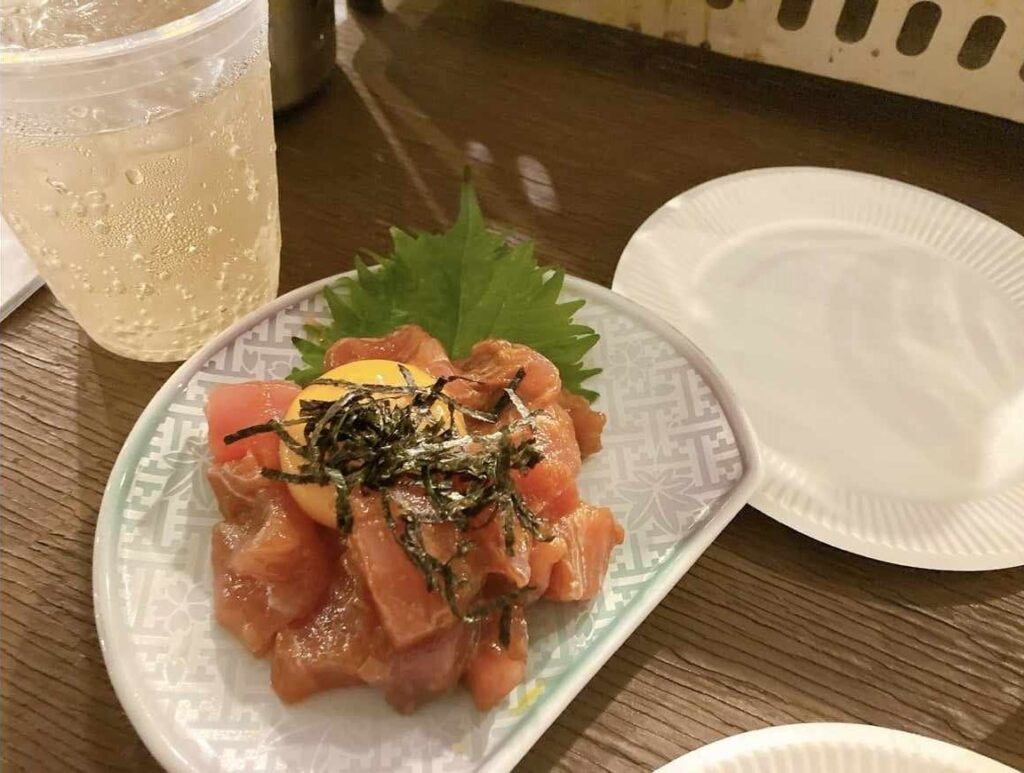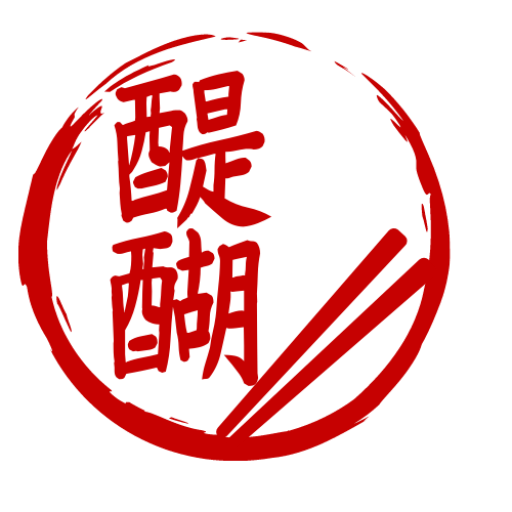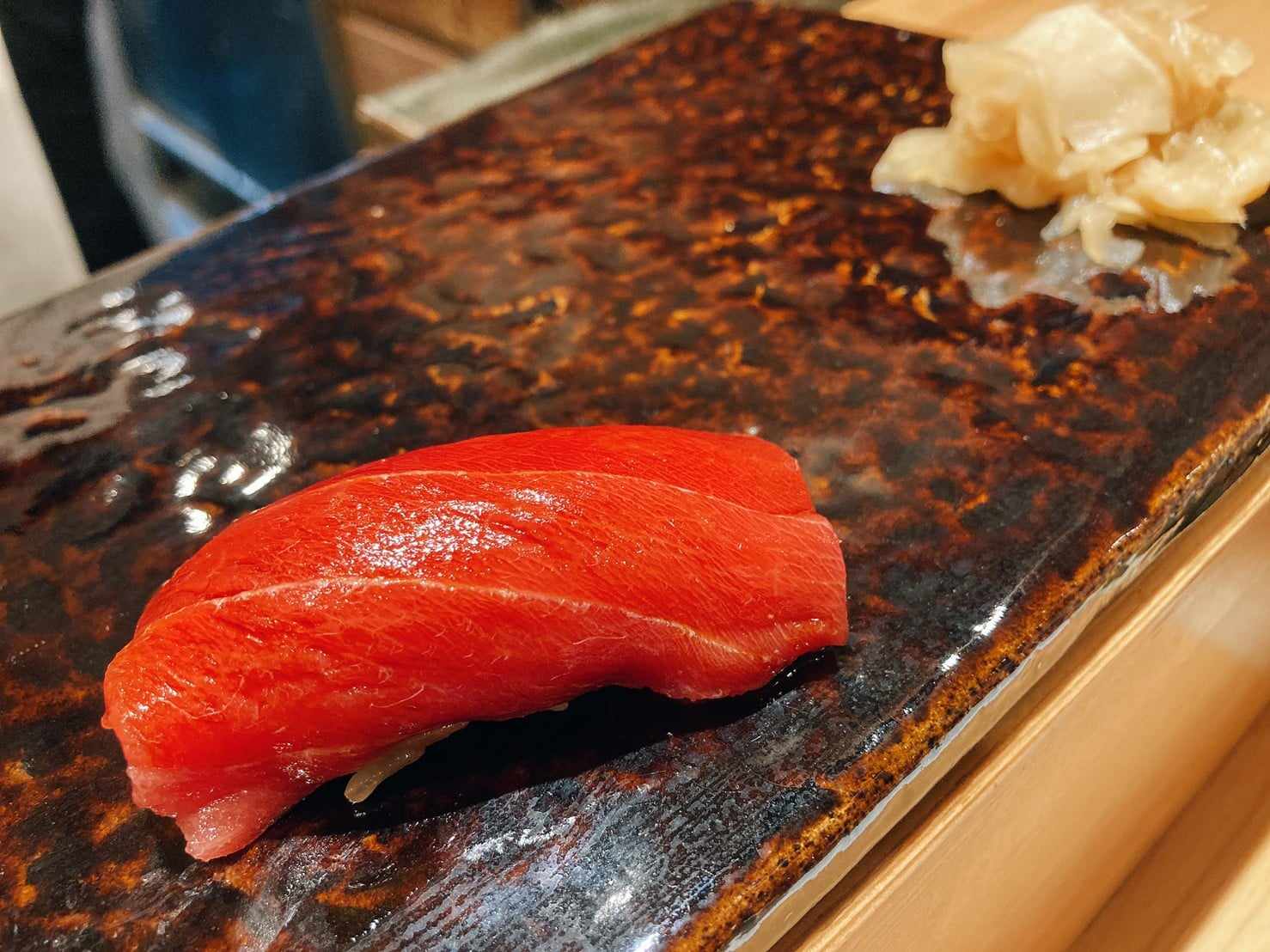Every year, the tuna auction in Japan makes headlines, where a single fish fetches the equivalent of tens of thousands of dollars. Spending thousands of dollars for a fish, however valuable, may seem out of the ordinary for those unaccustomed to Japanese things, although I find this the perfect example of the Japanese business mentality.
Although the sale of the tuna will not be sufficient to cover the expense incurred at the auction (a figure much higher than what the same tuna would be paid on any other occasion), the purchase of the best tuna on the market is a source of pride for the buyer, as well as proof of the fact that the buyer is willing to go “above and beyond” to offer the best to their customers.

Although it doesn’t surprise me that there are shopkeepers willing to spend staggering sums for a tuna, thinking about this type of episode still brings to mind a question: why, among all the species of fish that are commonly eaten in Japan Is tuna really considered the most valuable?
Humble beginnings
While sushi aficionados all over the world are certainly familiar with tuna, and the more experienced ones even know things like the different qualities available (lean, medium, fatty), perhaps not everyone is aware of the fact that tuna was originally the common people’s fish.
In the Tokyo (then Edo) area, in particular, tuna were easily caught in the bay, and it seems they were one of the main sources of livelihood for the fishermen of the area. One of the ways in which fish was preserved, in an era in which refrigeration was still very far away, consisted in preserving the fish with soy or vinegar; this preservation technique is probably a big inspiration for the invention of the edo-mae zushi, or “sushi- à-la-Edo” – alias of the most common and famous sushi format in the world, the nigiri-zushi.

Speaking of sushi, what is in modern times is considered the prince of tuna, i.e., fatty tuna – ōtoro 大トロ, in Japanese – was instead considered a food of inferior quality during the feudal period. It seems that people of the time did not have the same liking for fatty foods and, if they really had to resort to eating the fatty parts of the tuna, they used condiments such as spring onions to remove the fatty taste. Even now that tuna is considered a prized food, the combination of tuna fat and spring onions, called negitoro ネギトロin Japanese, remains one of the most loved.
By the way, Japan’s most valuable fish until fairly recent times was the sea bream, which still remains one of the most appreciated kinds of fish, especially on the occasion of celebrations and happy events, given its auspicious name: tai 鯛 which rhymes with the Japanese terms for “happy event, auspicious”.
Changing Times.
Before the advent of refrigeration, it was not possible to preserve tuna for long periods. The time’s food logistics also required much more time and effort, so it is understandable that tuna was available mostly to the local fishermen, who could consume the fish directly shortly after catching it.
The development of marinating methods, which made it possible to slightly increase the “shelf-life” of tuna (and other fish), involved a notable step forward, as well as, as mentioned before, one of the first experiments in modern sushi. However, sushi wasn’t yet the glamorous food it is today, so tuna remained a commoner’s food.
Another element that may have contributed to the not-exactly positive image of tuna is one of the terms referring to the fish, called in the ancient Japanese poetic collections of the Manyoshu and Kojiki as shibi シビ: it seems that, during the Edo period, people started to take this term as a bad omen, as it is assonant with the now extinct word shibi written with characters meaning “day of death” (死日)!
This very interesting suggestion, and the rest of this paragraph dedicated to the changing reputation of tuna, is told in an interesting article on the history of tuna, available in Japanese.
According to the article, the reputation of tuna as a cheap food began to change only at the beginning of the Showa Era (1926 – 1989). It seems that it was the students who spread the popularity of the food, which was, at the time, still quite cheap, and therefore within the reach of their pockets, as well as a common staff meal for workers in the fishing industry.
With the ever-more capillary diffusion of refrigeration techniques and tools, from the 60s onwards, tuna became more and more easily accessible for the Japanese, but, at the same time, more appreciated for its fatty flavor – in addition to that, since the ratio between fatty and lean meat on a tuna is in favor of the leaner parts, the fattier tuna cuts (medium and fatty tuna, chū -toro and ōtoro) assumed a value of “choice cuts” in the eyes of consumers.
The increase in tuna consumption on a global scale, and the international popularity that sushi has gained from the 80s onwards, have led to an ever-greater demand for this fish, which has, in turn, led to skyrocketing prices ( and worrying pressure on tuna stocks).
This is the story of how tuna became Japan’s most prized fish. But how is tuna eaten in Japan today?
How to eat tuna, the Japanese way?
First of all, one must define the period in which tuna is at its best: traditionally, and for tuna caught in waters near Japan, it is the winter period, approximately between December and January. In principle, the fattest fish is (nowadays) the one considered the best; cold waters make the fish get fat, which is why, in colder places, the best period for tuna fishing can begin already in September.
Then, how to properly enjoy in-season tuna?
Definitely raw, as we have seen, so either as sushi or sashimi. That being said, tuna is an incredibly versatile fish, and the Japanese culinary tradition, washoku, has developed many ways to serve it. Here is a non-exhaustive list of preparations that include tuna in Japanese cuisine:
Sushi: the most commonly used cuts of tuna are the lean tuna – akami赤身, then the “medium” one – chū -toro, and the fatty one – ōtoro. Among these, the third is often referred to as the most valuable, although some sushi masters (including the famous Ono Jiro), indicate that lean tuna is the one that best allows you to appreciate the true flavor of tuna.
Sashimi: the word sashimi generally indicates raw foods, cut into thin slices; usually it is fish, but also raw meat and, strictly speaking, raw vegetables, can be defined with the word sashimi. In the case of tuna, the most commonly used parts for sashimi are the lean ones.
Tataki: similar to sashimi, the main difference is that the fish (or meat) is quickly seared over a high flame, either directly or in a pan. Fish can be marinated briefly in vinegar or other condiments before preparation.
Yukke: another dish of raw fish, on which an egg, also raw, is poured. It is mixed well and eaten directly (without fear, since in Japan eggs are subjected to rigorous treatments and controls to make them safe).

Donburi: the word donburi generically refers to a dish made of rice, placed in a large bowl, and covered with the most varied ingredients, both cooked and raw. This also applies to tuna-based donburi, where the fish is usually served raw, or marinated, with a variety of other toppings: sesame oil, ginger, a raw egg… The cut most commonly used for a donburi is lean tuna, but a topping made from tuna fat mixed with spring onions is also quite popular.
Depending on the taste, there are those who prefer lean or fatty tuna, but what is certain is that Japanese tuna is of the highest quality. This once humble food has risen to cuisine’s nobility; however, it remains a versatile fish that is prepared in a variety of ways in Japanese cuisine. Whether you try tuna-based washoku dishes in Japan or try to prepare some at home, it is certainly an experience to try for those who love Japan’s most prized fish!

